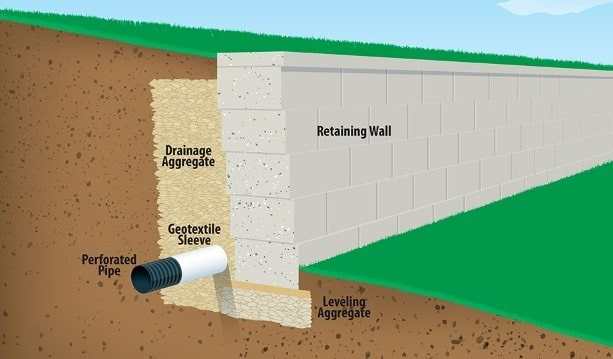-
Posts
3725 -
Joined
-
Last visited
-
Days Won
22
markc last won the day on November 8 2023
markc had the most liked content!
Personal Information
-
Location
west yorkshire
Recent Profile Visitors
markc's Achievements

Advanced Member (5/5)
1.5k
Reputation
-
If you are handy with a drill, use same size bit to rout the hole to elongate it in direction needed, bit more fiddly than larger drill but removes less material and only in direction needed. And yes we have all done it … or worse, marked several doors and fitted handles before hanging the door …..handle on hinge edge 🤫
-
I’m with Nick on this, it is surprising what you can run without any problems, and welding plants are rarely running anywhere near max so the current draw is usually pretty low (250a welding is only around 7.5Kva) and it’s not continuous unless doing big long auto runs.
-

Oak worktop and Osmo Top Oil (3068 Natural version)
markc replied to paro's topic in Kitchen Units & Worktops
Instead of sanding (which picks up the fibres) finish by scraping. I use a Stanley (other brands are available) type knife blade and drag along the surface, incline blade slightly towards direction of travel. A few strokes and you will feel the surface is very smooth. You will probably find most of the “whiting” will scrape off as you remove the “fluffy” grain patches -
Fast cutting speeds in timber require large teeth gullets, but that means nails or screws can end up in the gullet and jam the cutter. the multi material hole saws tend to break the carbide teeth because most drills won’t spin fast enough to “mill” through nails etc. ive had some success using ordinary bi-metal hole saws (starrett out perform most) with 2 or 3 large teeth gullets cut with an angle grinder . These allow more swarf to be cleared and make cutting faster. Also works well for holesawing aluminium which clogs the small teeth.
-

New roof on a full house refurbishment or is it War & Peace?
markc replied to frslam's topic in Roofing, Tiling & Slating
Now that’s a term I haven’t heard in many years. We always called the big Makita a rip snorter (used for cutting big glulam beams -
Hi @Doz, a lot depends on what is underground, well or borehole. Also what you are wanting the water for? And how often. converting your existing pump isn’t practical, motor, crank connecting to the arm etc. but a submersible or bore hole pump are pretty straight forward and could pup out through your existing fuxture with a bit of modification
-

Masons mitre or butt joint for solid wood joint
markc replied to paro's topic in Kitchen Units & Worktops
You only need a masons mitre if you have a pre formed chamfered or rolled edge. If doing solid top, mitre is great glued and bolted, then if you want a chamfer or rolled edge it can be done with a router after joining. -
Hi @slystallone, the wall shoulld have the soil side waterproofed with a perforated pipe running around the bottom “French drain” style and backfill with pea gravel, pebbles or similar to allow any water behind the wall to go down into the perforated pipe and then away around the side. idea is to take any water away to prevent the wall from being a Dam and being subjected to water pressure. It would be worth doing a bit of digging at the wall ends to check for any existing drainage that may have been blocked etc. failing that you are looking at water management which means a lot of digging or back to cutting holes in the wall and then collecting the water to take it away in visible pipes on your side,
-
To do this right you really need to be excavating behind the wall and installing drainage to take the water away rather than through the wall. A pored wall of that size really should have had the drainage installed, any chance there has been other work at the ends possibly blocking the drains? Drilling holes will reduce pressure and water level but then you will be managing the water on the good side of the wall - with pipework
-
Road planings work well, not the best looking but consolidate to a solid, tough surface allowing water to drain through.
-

Decent "middle of the road" brand for plugin tools?
markc replied to YodhrinForge's topic in Tools & Equipment
We find the dewalt corded stuff awkward - battery versions are bullet proof but the corded stuff is like it’s missing the battery to make it balance. track saw, I have an erbauwer one and it’s been great, not Festool smoothness or finesse but at 1/4 of the price it’s a good saw. If I was using it finish cutting cabinets etc. on a daily basis then I would have the festool, but for hobby stuff, trimming bottom of doors and breaking sheets down before table saw cutting I will stick with the erbauwer. corded drills, hand circular saws and grinders - I will only buy Makita. FYI, plunge track saw is a great machine, but heavy and cumbersome for a lot of jobs so a small light circular saw is great -

Temporary power to the building from our existing supply.
markc replied to saveasteading's topic in Barn Conversions
Really, the ones I picked up are 2.5mm, sorry @saveasteading I just opened the link but didn’t check details. You do need 2.5mm2 minimum on the cable at 25m long -

Temporary power to the building from our existing supply.
markc replied to saveasteading's topic in Barn Conversions
Yes, these are decent quality, couple of those so you are running parallel supplies, transformer on each and you are sorted. -

Temporary power to the building from our existing supply.
markc replied to saveasteading's topic in Barn Conversions
+1 keep 110v runs as short as possible. 2.5mm or even 4mm arctic cable for the 240v flexible extension to the transformer or even add another dedicated to the lights … saves going dark when they trip the transformer -

Advice please: cutting metal down pipe.... without
markc replied to ToughButterCup's topic in Rainwater, Guttering & SuDS
If you need to cut into the down pipe, holesaw for round holes, dremel type machine with a cutting disk for straight lines / squares etc





